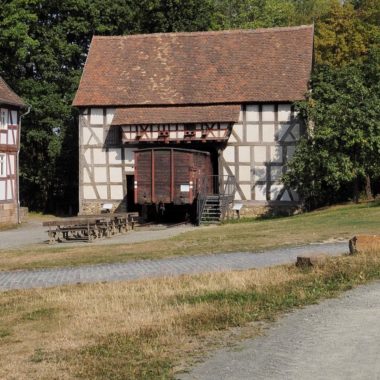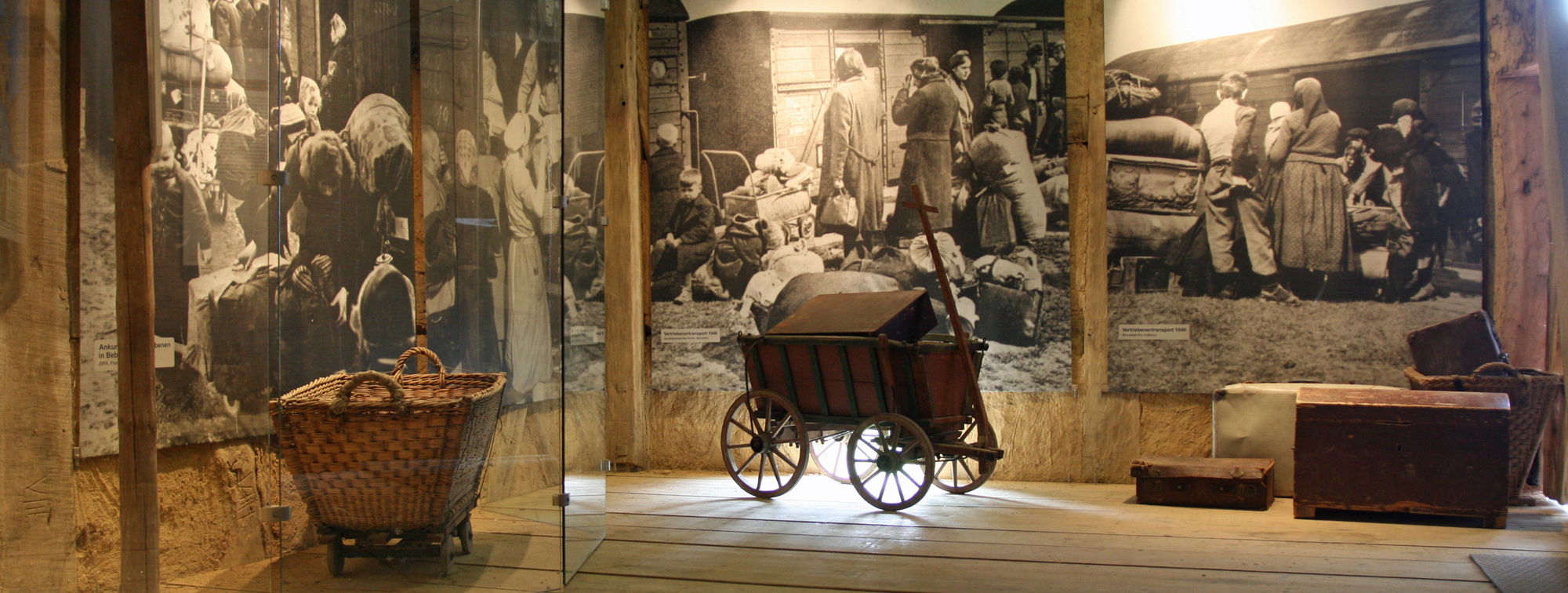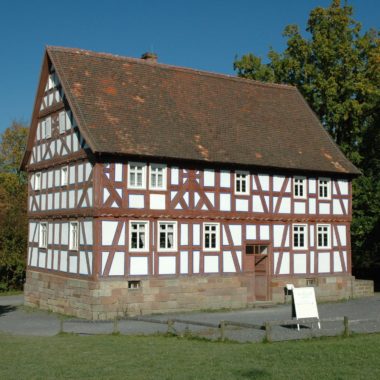
Flight and Expulsion

After the end of the Second World War, 100,000 German-speaking war refugees from the eastern regions of the Third Reich and 200,000 evacuees from bombed German cities lived in today’s Hesse. Every fifth residential building was destroyed. Often, several people had to share rooms. In this already dire situation the victorious allies decided that the entire German population should be expelled from Eastern and Southeast Europe into the now-reduced German territory. This fundamental decision affected several million people, 600,000 of which the state of Hesse, just having been founded in September 1945, was to accommodate.
More than 400,000 civilian exiles were deported to Hesse in around 400 expulsion transports. Their westward journey from today’s Czech Republic, today’s Slovakia and today’s Hungary took several days and the conditions were inhumane. 30 people with their few belongings each had to share a single freight or cattle wagons. About forty of these wagons were hitched together into an expulsion train, so that each of these trains contained up to 1,200 people. These were the same wagons that a few years previously had been used in the deportations to the concentration camps. In the Barn from Damshausen, visitors can get a first-hand impression of such a wagon. The interior of the wagon displayed here still features the rings for livestock transport and the grooves that would hold benches for troop transports.
Additionally, in the House from Sterzhausen, the exhibition addresses the subject of the new resident’s reception and integration, in particular the following sections: provisioning, accommodation, integration into the labour market, housing construction, political participation, preservation of the cultural heritage of the areas of origin and the successful economic and cultural integration into post-war Hessian society.
For the most part, expellees owned only what they were wearing and carrying on arrival. They were strictly limited to taking with them only 30 kilogrammes of their belongings. The new arrivals, torn form their old homes, needed furniture, household goods, clothes, fuel and food. There were few opportunities at first for paid labour. In the harvest months, they could earn some produce in lieu of payment for helping in the fields. It took until the 1950s for the professional integration of expellees to really get underway. They began to leave their billets and moved into their own homes nearer to their new workplaces. Most expellees did not succeed in finding employment in their previous professions. Many had to do unskilled temporary work in trade, industry or farming. Some formerly self-employed or entrepreneur expellees brought new trades to Hesse, such as musical instrument making in to Nauheim (Hesse), or the glass industry to the Upper Taunus region.

Mit dem Laden der Karte akzeptieren Sie die Datenschutzerklärung von Google.
Mehr erfahren





